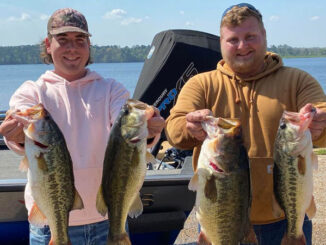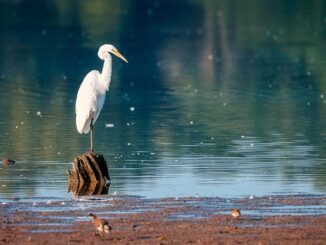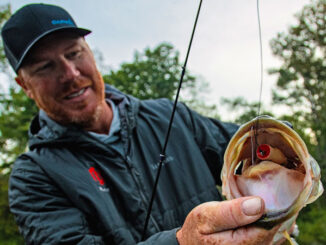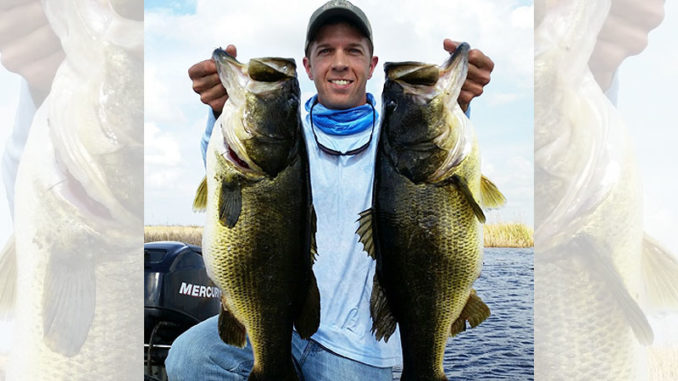
Johnny Watkins caught five double-digit bass at the Lacassine Pool last year. Here’s How he did it.
The shallow, freshwater impoundment south of Lake Arthur is well known as one of the few spots in Southwest Louisiana where anglers have a real chance at landing a trophy, double-digit fish.
Take Johnny Watkins for example. A 41-year-old captain with the Lake Charles Fire Department from Longville, he caught five double-digit fish there — in 2018 alone. He has been fishing the Pool since he was a teenager and has fond memories of sleeping while waiting in line for the refuge gates to swing open on the first day of the season.
“Gosh, I’ve seen that line with a couple of hundred trucks in it before. I mean it’s crazy. It’s wild, man. We used to go out there and spend the night when I was in my early 20s,” Watkins said. “But over the years, I’ve learned you can just get out there around 7 o’clock, let those guys get in the water — and you’re only missing an hour’s worth of fishing.”
Watkins said he’s literally lost track of the 10-pounders he’s caught in the Pool, but he did reel in two 11-pounders about two weeks apart last spring and has more than 25 years of experience to share about targeting big fish in March.
“When it opens up, to me, your bigger fish are predominantly in the bigger ponds,” he said, noting depths in the impoundment typically range from about 2 to 4 feet. “Any of the big ponds — like Little North Lake, North Lake and South Pond — hold the deeper water, which holds the bigger fish. You know how those big fish are: they like that deep water and cover. And in the bigger ponds, they have deep water, cover and food — so they don’t have to go anywhere.
“Canals are deeper, and you can catch big fish in the canals, but the thing is, there’s a lot of boat traffic, and those fish get really finicky due to the boat activity in the canals. They’re constantly being run over by boat motors in the first few weeks.”
For the uninitiated, motor restrictions are in place inside the refuge, a 16,000-acre impoundment located inside the Lacassine National Wildlife Refuge.
A 40-HP motor is the biggest you can run, and one unit is set aside strictly for non-motorized vessels, like kayaks and canoes, and Watkins said he holds some impressive bass.
Tie on a frog
Watkins didn’t hesitate when asked about his go-to lure at Lacassine: a Stanley Ribbit in watermelon with a pearl belly on a heavy, 5/0 weightless offset hook.
“I throw that more than anything,” he said. “The noise that frog makes for some reason gets those fish mad. I’ve caught some big fish when it first opens up on a topwater frog like a Ribbit or a Top Toad, some real big fish, like 8- and 9-pounders, doing that.”
On a cloudy day, he’ll opt for the black Ribbit with red flakes. On bluebird days, he goes natural with the watermelon and pearl.
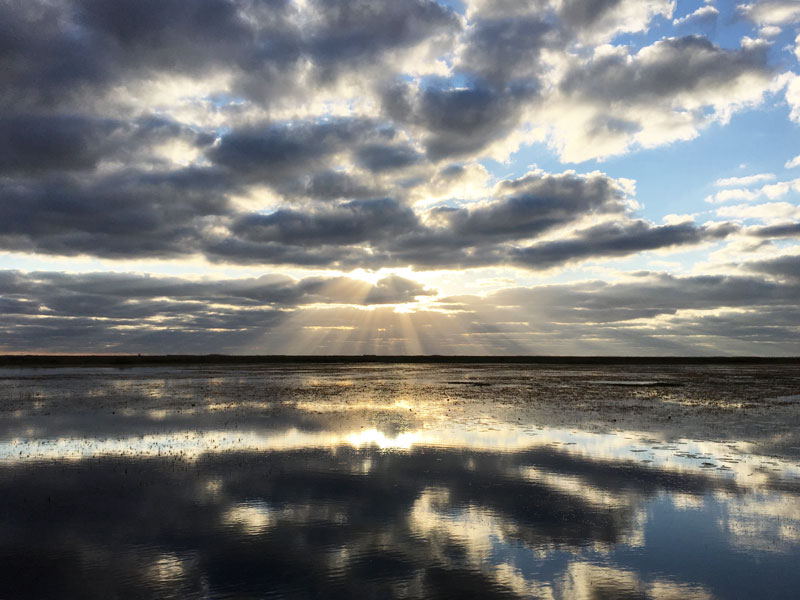
The habitat is mostly grass and lily pads, but in March, the pads haven’t opened up. Watkins favors a stealthy approach that works well for him out in the open water where he typically finds bigger fish.
“The root systems are still under the water, but the actual pads themselves haven’t surfaced yet. So you’re fishing grass. If you get a decent wind, you can go to the upwind side of the pond and make a drift and systematically aim your drifts across the pond,” he said. “You can cover a whole pond like that really fast, and it’s really quiet, because you don’t have to stay on your trolling motor and disturb a bunch of water.
“So it’s really a stealthy way to fish — you let the wind push you across that flat, and a lot of times those fish don’t even know you’re there.”
If his frog isn’t producing near the surface, Watkins might opt for a creature bait instead.
“If they’re not hitting the Ribbit, I’ll throw a Speed Craw out there, even if I have to put a 1/32-ounce weight on it — something real small so I can get some casting distance out of it,” he said. “I’ll keep my rod tip up real high and reel that Speed Craw on top of the water just like a Ribbit. It makes a little less noise with a little smaller profile if they’re being finicky.”
A fluke is no fluke
If a cold front has just passed through and mid-March features chilly conditions, Watkins might opt for a watermelon red Zoom Fluke or a 6-inch Zoom lizard.
He’ll blind-cast the Fluke on a 4/0 weightless offset hook, but he’s always vigilant for bedding fish in the typically clear March water.

“I just keep my eyes peeled if I roll across a bed,” he said. “Not all of them have fish on them, but sometimes you’ll get blessed and run across one with a big fish on it. That’s when you’ll go with your choice of soft plastic baits: a lizard or a creature bait or a Fluke.”
Unlike some anglers who use bright colors on bedding fish so they can more easily see the strike, Watkins keeps his presentation a little more subdued.
“I try to stay natural with that; a lot of people go with white just so they can see the fish inhale the bait. I think that’s great, and it does work, but I found you can get those fish to bite quicker with a natural-color bait like a green pumpkin or a watermelon red, something that looks like a bream or is crawfish-colored,” he said. “To me, it’s natural and blends in with the moss out there. I’ll get them to eat a lot faster on that color than something white or brightly colored.”
Leapin’ lizards
Another of Watkins’ go-to Pool lures in March (and into the spring) is a 6-inch Zoom lizard, which he often rigs with a 1/16-ounce bullet weight for more casting distance. It’s another good cool-weather option if the Ribbit isn’t producing on a given day.

“Especially when it first opens up and there’s cooler weather, sometimes they’ll come up and just blast that frog, but those Florida bass are affected by cold weather a lot, especially in only 2 or 3 feet of water,” he said. “But I’ll fish that lizard about 6 inches under the surface.
“Reel it on a steady retrieve with your rod tip up. That way, if you see something following your bait, you can drop your rod and it will give you enough slack where that fish can inhale the bait and you can reel down to it and set the hook.”
Gear up for a lunker
Watkins stresses that you can encounter big fish in grass, reeds, lily pads and cover, so your converted speckled trout rod might not be what you need if you get bit by a hawg.
To that end, Watkins said his go-to rod for the Pool is a 7-foot, heavy action broomstick. For flipping in the late-spring and summer, he goes with a 7-foot-6, extra-heavy action rod.
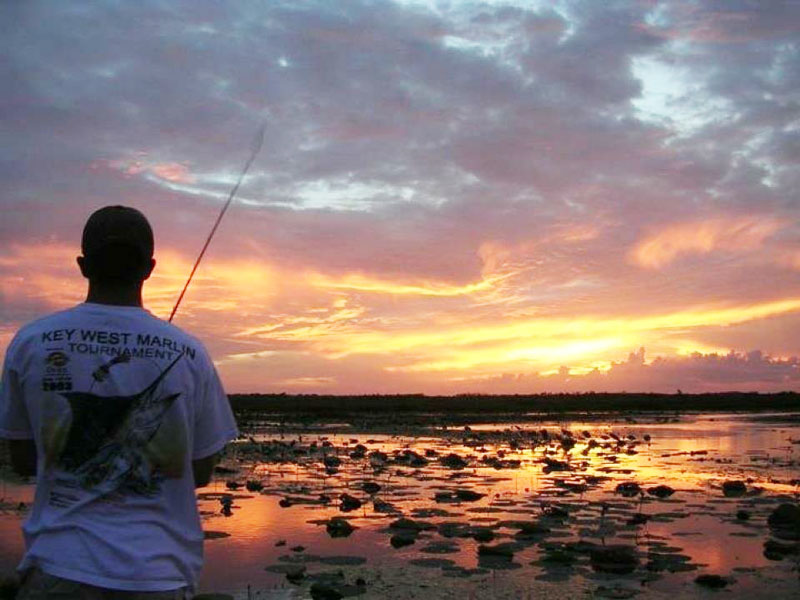
“I like a little softer tip on a frog rod, but I still don’t sacrifice the backbone of the rod. The bottom three-quarters are still pretty stiff,” he said. “ I really want to turn that head as soon as I can and get it coming toward me.
“If you can do that, your catch ratio really goes up significantly. If you go a limber rod and set the hook, they’ll actually run away from you for a second or two — and they’re normally hanging around some kind of ambush spot, so they can turn really fast and put you in a bind.
“I’ve seen people go out there with limber rods, and you’re going to have a hard time if you hook a big fish on a limber rod. It’s going to take you for a ride and get wrapped up. You have to get that fish’s head turned and coming toward you — quick.”
Don’t skimp on line, either. Even in the clear water of the Pool, Watkins goes with 65-pound PowerPro braid straight to the hook.
“To me, braided line is big out there. If you’re blessed and hook up to one of those big fish, you don’t want to lose it,” he said. “I use 65-pound braid because I like to target big fish. You could probably go down to 40 if you were fishing the flats with a Fluke and weren’t flipping, but I used to fish monofilament out there, and I landed a lot more fish after I went to braided line. If you hook one of those big fish on light line, it’s going to break you off. It will take you down and wrap you up in that stuff and break your heart.”
Patience is a virtue
Watching the explosion of a giant bass devouring a topwater frog makes most bass anglers weak in the knees. Often though, a quick hookset results in the frog whistling back at you — minus the fish.
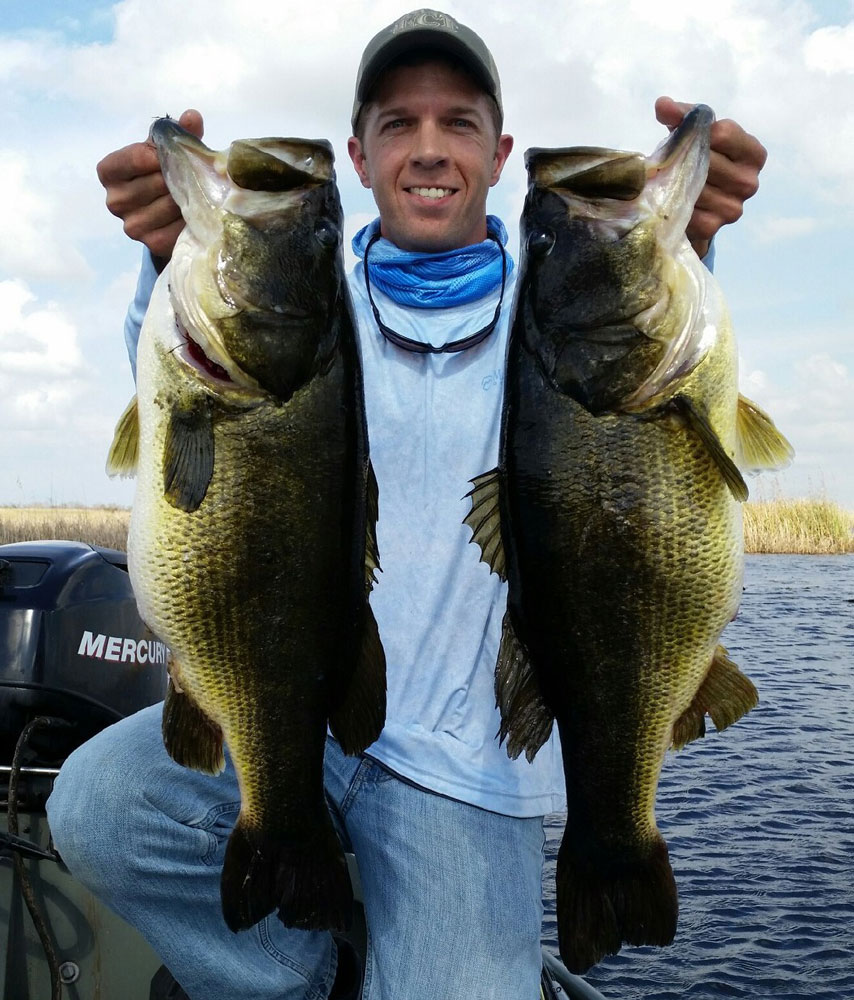
Watkins said he learned the hard way that patience — as tough as it is to practice — is key when setting the hook with a frog.
“I learned over the years to keep my rod tip up. If I’m walking the dog with that frog, I’ll keep the rod tip down. But anything other than that, I have my rod tip up. But the biggest thing is I make myself count to two,” Watkins said. “It’s just human nature to immediately set the hook. Over the years, though, you miss enough fish, and you’re like, ‘OK dummy, you got to do something different. ‘
“I say a-thousand-one, a-thousand-two, and as I’m doing that, I’m dropping my rod and reeling in my slack. To me, if you count to two, it gives them a chance to eat it. A lot of people say they let their line get tight, but I can’t wait that long. Counting to two definitely has helped me put a lot more fish in the boat… . The more you do it, the more you can wait, but it’s hard.”
Catch, Photo, Release
There aren’t any refuge rules about releasing lunker bass; you can certainly keep them if you so choose. But Watkins hopes you’ll consider letting big girls go back to spawn and swim another day. If you land a fish of a lifetime, take some photos and measurements and commemorate it with a replica mount.
“I don’t think a lot of people realize how special this place is. I hate to say it, but I think a lot of folks take it for granted,” he said. “There’s been a 13-pounder caught out of there before…. It’s crazy. I try to encourage everybody to catch and release out there…. I try to practice that.”
Bringin’ the heat
Watkins said as long as there’s not a prolonged drought that drops the water level, the frog, Fluke and creature bait pattern should last into the early summer, when heat finally moves the bass from the shallows into deeper water.
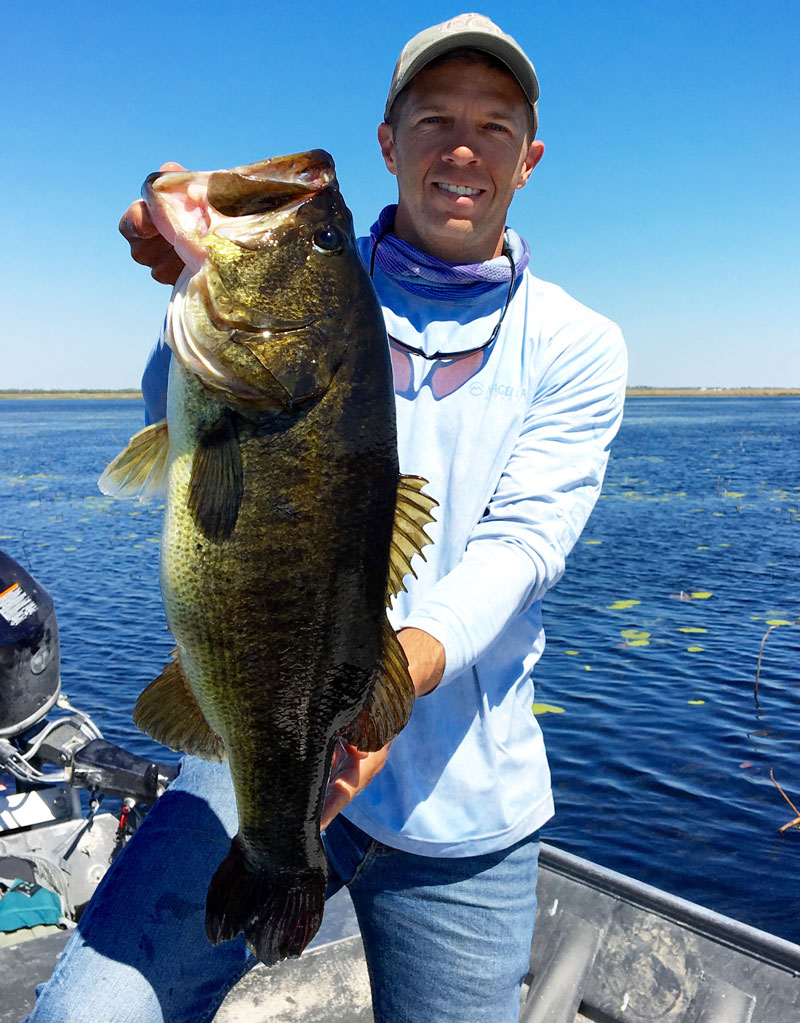
“As it starts heading to summertime, your pads start coming up, and your pattern totally changes. You have to throw a hollow-body frog like a Top Toad and fish the holes in the lily pads,” he said. “Those fish, when it gets really, really hot, they’ll go bury down deep in those canals; some of them are 8 to 10 feet deep. They go in that cooler water, and you have to pick up a big 1-ounce weight and actually punch the pads and the grass on the sides of the canals. I’ve caught some big fish doing that — but not everybody has the patience for it.”
The fish will tell you when to make the move to the deeper water pattern, he said.
“Everybody asks, ‘When do you start flipping?’ The fish will tell you when to start. You’ll notice. You’ll go from catching them in the flats in the ponds, then it gets slow so you have to adjust,” he said. “You have to move with the fish — they’ll eventually make their way out to the canals depending on the water level.
“If we get a drought, they’ll get to the canals earlier than they normally would to survive. But normally, it takes a while for that water to heat up before the majority make their way to the canals. June is usually when that happens.”
